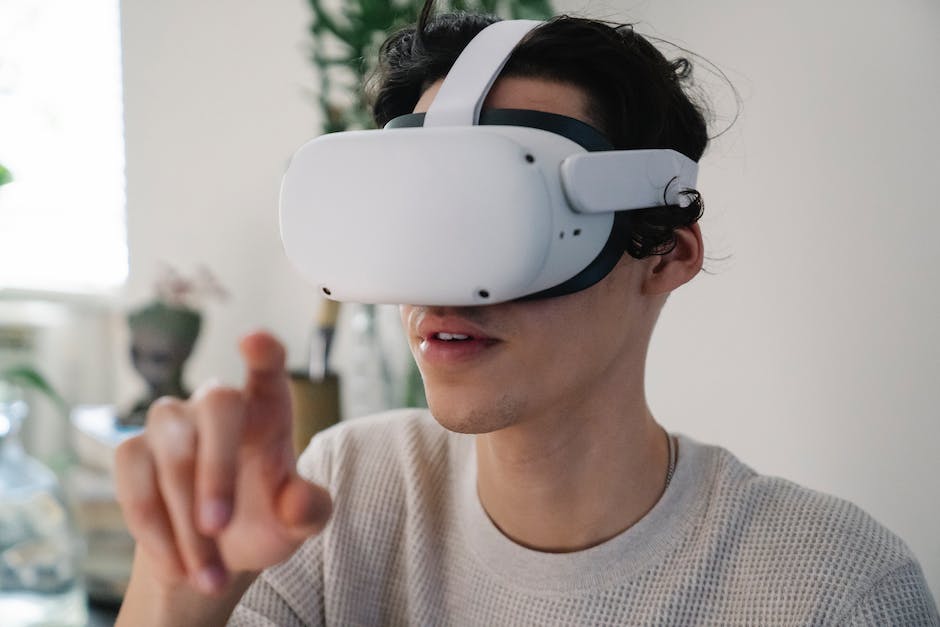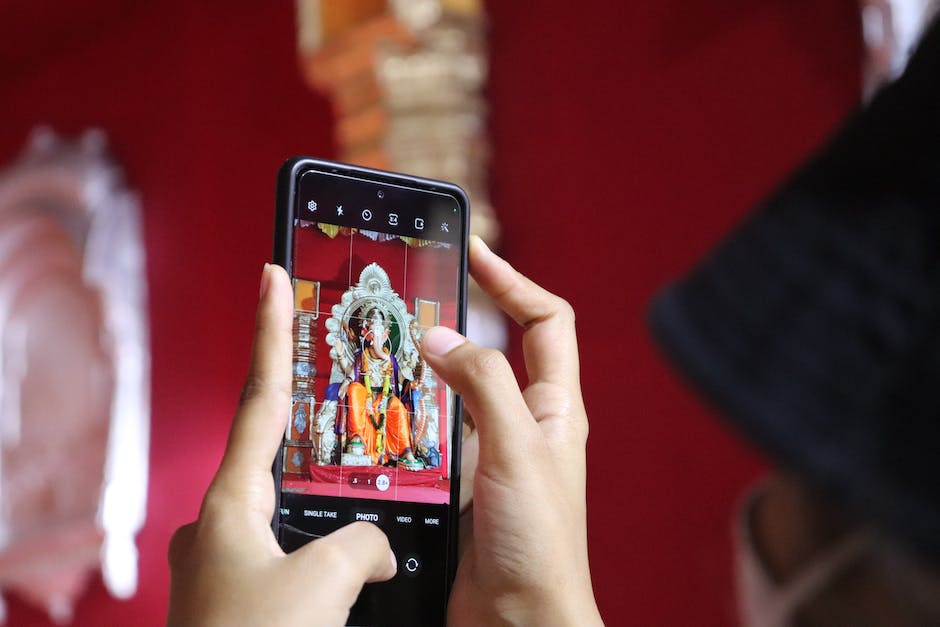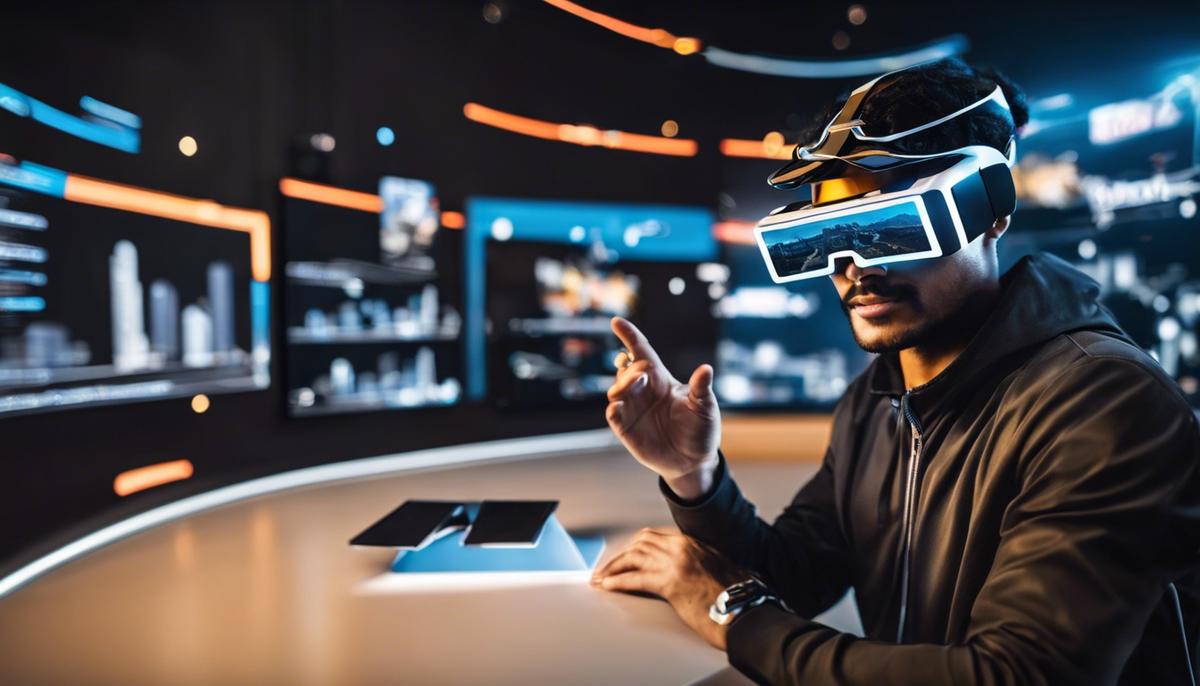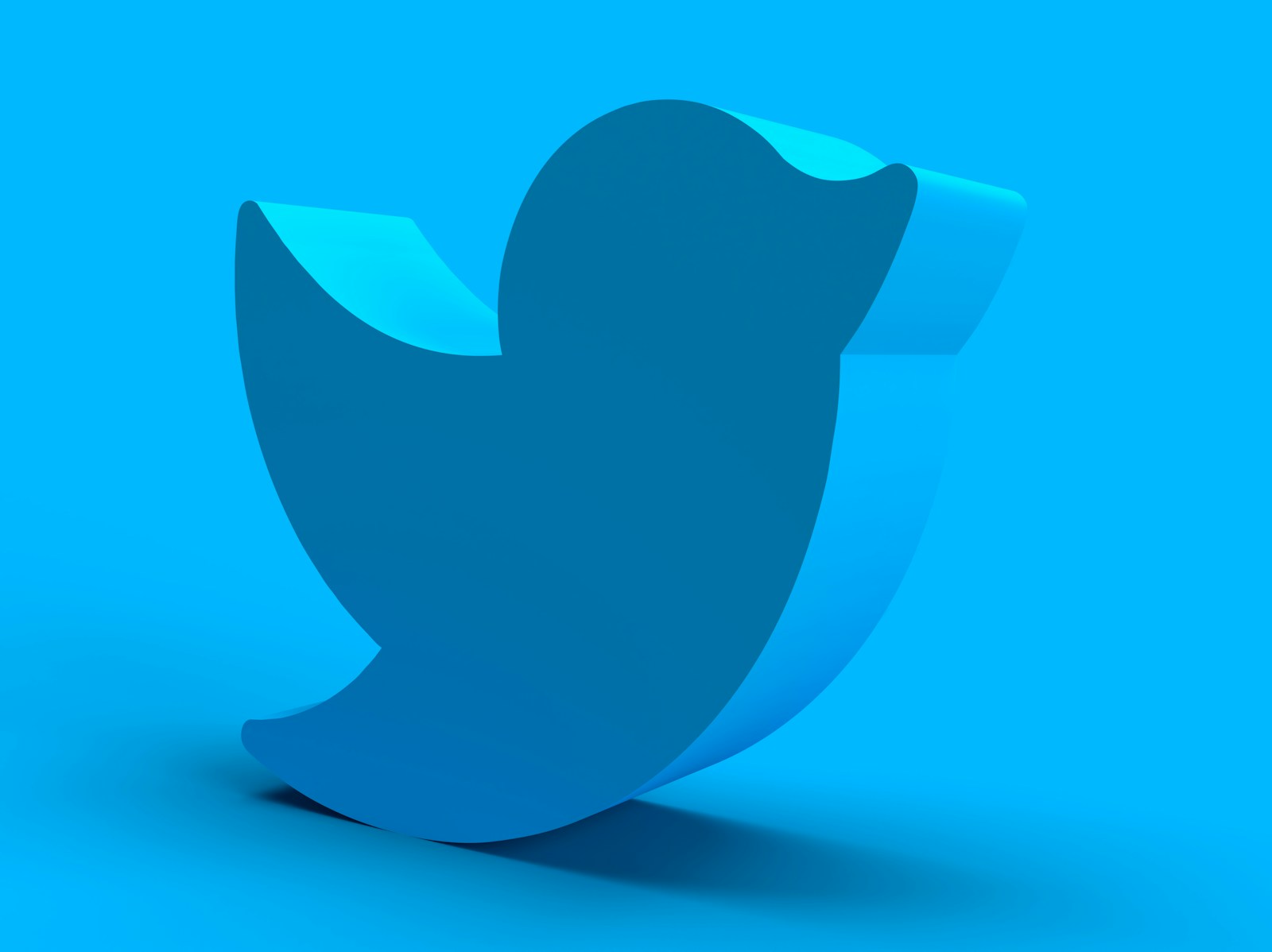In a world where digital landscapes are constantly evolving, augmented reality (AR) emerges as a groundbreaking force, poised to redefine the interplay between brands and consumers. At its core, AR marries the physical and digital realms, offering a new dimension of interactivity and personalized engagement. As we delve into the intricacies of augmented reality, we unravel its potential to not only transform digital marketing but also to foster a deeper connection between companies and their audiences. This exploration begins with a foundational understanding of AR technology and stretches into the vast potential it holds for shaping captivating marketing narratives that resonate in today’s technologically-enriched marketplace.
The Fundamentals of Augmented Reality
Augmented Reality: The Game Changer in Digital Marketing
In an age when technology continuously reshapes our world, it’s no surprise that digital marketing has encountered a powerful ally: Augmented Reality (AR). A buzzword for tech enthusiasts and a pivotal tool for marketers, AR is redefining engagement in the digital realm.
So, what is Augmented Reality? Think of it as an enhanced version of the real world. Through the use of digital visual elements, sound, or other sensory stimuli, AR does what it says: augments our reality. It’s not a full dive into a digital universe like Virtual Reality (VR). Instead, AR overlays digital information onto the physical environment around us, often through a smartphone or AR glasses.
Now, onto how this ties into digital marketing. In a nutshell, AR can make marketing campaigns come to life – quite literally. It bridges the gap between the virtual and real world, allowing for a unique interaction with products and brands.
Imagine scanning a flyer with your phone and a 3D model of a product pops up, or trying on clothes virtually by just looking at your screen. This interactive experience not only captures attention but also entertains, ensuring a brand’s message is more likely to stick.
Moreover, AR enables personalized experiences. It can modify content in real-time to tailor ads to the individual, enhancing customer satisfaction and deepening the relationship with the brand.
Not to forget how AR can skyrocket social engagement. Picture unique filters and effects that go viral on social media. Those are AR at work, creating buzz and building a community around a brand.
Additionally, AR’s immersive nature can lead to better-informed purchases. Customers can visualize products in their own space before buying, reducing uncertainty and the chance of returns.
And let’s not skip over data collection. AR interactions provide valuable insights into how consumers behave and what they prefer, allowing marketers to refine their strategies and offer more of what consumers want.
In conclusion, AR isn’t just a novelty; it’s a powerful tool transforming digital marketing. Businesses that embrace it can expect to create more engaging, personalized, and memorable marketing campaigns to delight and captivate their audience. Early adoption isn’t just an option; it’s a fast track to staying ahead of the curve in the digital age.

AR Tech Advancements and Marketing Potential
Augmented Reality (AR) is not just the next big thing; it’s the current big thing, reshaping digital marketing strategies across the globe. For the tech-savvy marketer, this is a playground of opportunities. So let’s dive deeper into the burgeoning realm of AR and explore new dimensions it brings to the table.
Firstly, let’s touch on interactive advertising.
AR takes the concept of engaging content to a whole new level. Interactive ads can transform static images on a page into dynamic 3D models. Imagine scanning a product image with a smartphone and having it spring to life. This isn’t just hypothetical—it’s happening, and it’s facilitating a much more immersive brand experience.
Next up, location-based AR marketing.
It’s like a tech-powered treasure hunt for deals and promotions. Through AR, businesses can anchor virtual promotions to real-world locations. This not only drives foot traffic but creates a memorable interaction with the brand. Looking for the nearest discount? Just follow the virtual breadcrumbs.
Customization has always been a cornerstone of effective marketing.
However, AR ups the game by presenting real-time customization options. Window shoppers can manipulate product features such as color or design through AR interfaces and immediately see how the customized product would look in their hand, home, or on their body. This wizardry doesn’t just attract customers; it captivates them.
Training and tutorials represent another frontier where AR is making a significant impact.
Imagine using AR to demonstrate the setup of a complex product step by step or showing how various skincare products can be applied in sequence. Not only does this add value to the customer, but it also reduces frustration and the likelihood of product returns.
Then there’s the seamless integration of AR with other tech advancements.
Pairing AR with AI, for instance, brings forth smart recommendation engines that can virtually place products in a user’s environment and suggest complementary items based on preferences and past behavior. This isn’t just convenient; it’s predictive marketing at its most intuitive.
On the analytics front, AR provides a gold mine of insights.
Interaction with AR content offers granular data about user preferences and behavior, making it possible to tailor marketing campaigns with incredible precision. Think beyond click-through rates; this is about measuring engagement in a multi-dimensional space.
Lastly, AR’s impact on collaborative shopping experiences is building tighter communities of brand advocates.
Customers can share their virtual try-ons or product placements with friends or social media followers, effectively amplifying brand reach. This communal aspect of AR transforms customers into brand ambassadors without them even realizing it.
Technological advancements in AR are not just expanding horizons; they’re creating entirely new landscapes for digital marketing to conquer. The key to leveraging AR’s full potential is to stay innovative, adaptive, and always ready to explore uncharted territories of customer engagement. No summary needed—the message is clear: AR in marketing isn’t just evolving; it’s revolutionizing.

User Experience and Interaction
Augmented Reality (AR) continues to revolutionize the digital marketing landscape by offering immersive and interactive user experiences that were once the realm of science fiction. Beyond the dazzling displays and virtual try-ons, AR’s true power lies in its capacity to foster deeper engagement and sustain user interaction. Let’s dive into additional aspects that highlight how AR can further enhance user experience and interaction in the realm of digital marketing.
First off, interactive advertising takes a leap forward with AR. Imagine scanning a QR code on a billboard and suddenly witnessing a product demonstration right in front of you. This isn’t just engaging; it’s a game-changer for ad recall. AR transforms passive observers into active participants, compelling them to interact with the brand on a whole new level.
When it comes to location-based AR marketing, the possibilities are just as exciting. Brands can trigger AR experiences specific to a user’s location, merging the physical and digital worlds in real-time. Walk by a store, and AR can pull up a digital window displaying personalized promotions, drawing customers in with pinpoint relevance. It’s like having a concierge for every shopper’s path, enhancing their journey with perfectly timed digital assists.
Real-time customization is another frontier. Picture changing the color of a car or customizing the features of a sneaker with a few taps on your smartphone. AR enables such real-time changes to be visualized on products, giving users the power to create their dream product, resulting in a much more meaningful connection with the brand.
AR isn’t just for customers; it’s also revolutionizing training and tutorials. By overlaying digital instructions onto the physical world, AR allows users to learn and apply new information in a hands-on manner. This application could transform everything from assembling furniture to mastering a new coffee maker, effectively reducing frustration and enhancing product satisfaction.
Furthermore, the integration of AR with other technologies like AI is elevating user experiences to hyper-personalized levels. AI can analyze customer preferences and behavior to generate AR experiences that are tailored on-the-fly—leading to interactions that feel incredibly relevant and engaging.
The insights gleaned from AR interactions are a goldmine for marketers. With advanced analytics, brands can track how users interact with AR experiences, giving them detailed data on user engagement levels, preferences, and behaviors. These analytics enable brands to refine their marketing approaches, tailor future content, and create increasingly effective AR experiences.
Lastly, AR is reinventing the way we consider shopping with others. Collaborative shopping experiences via AR allow friends or family members to shop together in a virtual space, no matter their physical distance. They can share opinions on products in real time, adding a social dimension to online shopping that can mirror the in-person experience.
To sum it up, AR is not just about bringing the digital into the physical realm; it’s about crafting interactions that are rich, personalized, and geared toward making the user’s life more engaging and enjoyable. It supports decision-making, enriches the shopping experience, and provides valuable insight for continuous improvement of marketing strategies. With AR continually pushing the boundaries, it’s an exhilarating time to be in digital marketing.

Integration into Existing Marketing Strategies
Augmented Reality (AR) is shifting the marketing landscape by introducing immersive and interactive ways for consumers to engage with brands and products. This transformative technology seamlessly fits into current marketing strategies and channels, empowering marketers to craft novel experiences that resonate deeply with their target audience.
Let’s dive deeper into the innovative spiral AR casts over existing marketing paradigms.
AR Enabled Print Advertising:Imagine flipping through a magazine and your favorite apparel comes to life, showcasing the fabric’s texture and flow, all through the camera lens of your smartphone. AR breathes new life into traditional print advertising, adding an interactive digital layer that facilitates a tactile understanding of the product without physical touch. This reinvention of print drives consumer engagement up a notch, ensuring that adverts are no longer just glanced over but are interacted with.
Enhanced User Manuals and Packaging:AR transforms user manuals and product packaging into interactive knowledge hubs. Brands can overlay digital information on physical products, making setup processes or ingredient lists pop out in 3D. This not only simplifies the learning curve for complex products but also adds an element of delight to the unboxing experience.
Immersive Retail Experiences:Retail is riding the AR wave too. Innovative retailers are employing AR to eliminate the guesswork in shopping. From virtual fitting rooms to in-store navigation aids that help locate products, AR makes the brick-and-mortar experience as informative and customized as its online counterpart. Moreover, AR-enabled smart mirrors in fashion retail are revolutionizing the try-before-you-buy experience by allowing shoppers to see themselves in different outfits without the hassle of changing.
Enhanced Customer Support with AR:Customer support gets a facelift with AR. Technical support calls can now be assisted by AR visuals, guiding users through troubleshooting steps with overlaid images and animations. This not only expedites the resolution process but also reinforces the brand’s image as innovative and customer-centric.
Finally, AR cannot be discussed without mentioning its significant role in events and experiences. Whether it’s a product launch or a brand activation, AR elements captivate audiences and create buzz, amplifying reach and impact. It’s not uncommon now to see event attendees sharing their AR interactions on social media, thus multiplying the brand’s visibility.
In conclusion, AR is the missing puzzle piece in modern marketing toolkits. It’s not merely an add-on but an integral component that amplifies conventional channels and strategies, enriching the customer journey and cementing brand loyalty. Marketers not harnessing AR’s potential are missing out on an audience that craves innovation and engagement. The key is to seamlessly embed AR into the fabric of marketing endeavors for a truly enhanced consumer experience.

Data Analytics and Consumer Insights
Augmented Reality (AR) stands at the frontier of transforming data analytics into a powerhouse tool for marketers. In a landscape where consumer insights are gold dust, AR-driven data analytics are the treasure map leading to richer, deeper understanding of customer behavior.
Beyond the visually engaging experiences AR offers, there’s a critical layer that’s all too often overlooked: data. With AR, every interaction—a glance, a touch, a linger—is a datapoint. Here’s how AR analytics refines the extraction of consumer insights, turning them into actionable strategies.
Tailored Analytics for Hyper-Personalization
Imagine walking through a data minefield where each step takes you closer to understanding your customer’s preferences. That’s AR for you. User interactions with virtual elements are meticulously tracked, allowing marketers to see what captures attention and triggers engagement. This trove of data paves the way for hyper-personalized content, fine-tuning marketing to resonate with individual preferences.
Heatmaps: Visualizing Interest and Engagement
Heatmaps in AR don’t just look cool, they’re an analytical gold mine. They visually represent where users look and interact within an AR experience. A hotspot indicates interest; a cold spot, not so much. Marketers can dissect these maps to adjust and direct attention where it’s most profitable.
Sentiment Analysis: Reading Between the Lines
Through AR, expressions and reactions aren’t just seen—they’re analyzed. Sentiment analysis interprets facial cues and body language in real-time. It’s a game-changer for figuring out what delights or dissuades a consumer without them uttering a single word.
Behavioral Analytics: From What to Why
Behavioral analytics step in to give a much-needed context for every action a consumer takes in an AR environment. They don’t just answer what a user does but delve into why they may be doing it. This helps predict future behaviors, allowing marketers to stay one step ahead of a consumer’s thought process.
Conversion Tracking: The AR Sales Funnel
From visual engagement to the checkout cart, AR analytics track the journey. Marketers can thus see where users drop off and tweak the experience to tighten the funnel. The result? Higher conversion rates and a seamless journey from AR interaction to purchase.
Spatial Intelligence: The New Dimension
AR introduces a unique dataset—spatial intelligence. How consumers interact with virtual objects in real spaces unlocks new insights. Do customers prefer certain products in certain environments? Spatial analytics will tell. Marketers can craft experiences that capitalize on environmental factors, elevating the relevance of promotions.
User Journeys: Customized Pathways
Customized navigational data unearthed through AR analytics reveal the paths users take within an app or campaign. It’s like watching over a consumer’s shoulder—without the creep factor. Analyzing these journeys helps in streamlining the UX and tailoring future pathways that they are more likely to follow.
Time Engagement Metrics: The Depth of Interaction
It’s not just about clicks—how long a user engages with an AR element speaks volumes. Engagement time metrics yield insights into what’s working and what’s not. Marketers can hone in on high-value interactions and replicate successful elements across campaigns.
By leveraging AR-driven data analytics, marketers are no longer shooting arrows in the dark. They have precision-guided insights leading them straight to the bullseye of consumer preferences. Integrating AR technologies, along with the rich data they provide, is not just a futuristic concept—it’s the current benchmark for successful, insight-driven marketing. Welcome to the future of consumer insight—it’s augmented.

The Future of AR in Marketing
Augmented Reality (AR)
isn’t just reshaping the digital marketing landscape; it’s setting the stage for a seismic shift in how brands connect with consumers. As the mesh of the virtual and real world grows more intricate, AR stands at the forefront, ready to launch marketing into a new epoch.What fascinates about AR is the promise it holds for immersive advertisements. Imagine billboard ads that come alive or magazine inserts that leap into interactive demonstrations when viewed through a smartphone. This isn’t a distant dream—it’s a rapidly approaching reality, and it means static ads will soon transform into dynamic, engaging experiences.
Then there’s the concept of enhanced user manuals and packaging. Brands can now offer more than just a product—they can deliver an experience. Manuals may soon become relics of the past as AR-enabled packaging provides consumers with interactive set-up guides and product demos. No more deciphering cryptic instructions; just point your phone and watch as your new gadget demonstrates its setup process in real time.
Retail spaces are poised for a revolution as well. The future promises virtual fitting rooms and aisles that give recommendations based on shopping history. If a consumer lingers on an item, AR can provide additional information, such as alternative colors, sizes, related products, or even user reviews.
Customer support will also get an AR overhaul. Imagine pointing your phone at a malfunctioning device to receive real-time repair assistance or an overlay that guides you through troubleshooting steps. The lines between customer support and self-service will blur as AR provides capabilities that were once the exclusive domain of live support staff.
AR’s impact extends to special events and experiences. Booths at trade shows might not require physical prototypes; instead, they’ll showcase virtual products that visitors can manipulate through AR interfaces. Concerts could offer enhanced experiences with AR-distributed content, thrilling fans beyond the live performances.
Beyond these innovations, AR uniquely equips marketers with tools for understanding and engaging their audience at an unprecedented depth. Through tailored analytics, marketers can study user interactions and preferences, leading to hyper-personalization of content—AR can literally adjust marketing messages based on consumer behavior patterns.
Heatmaps are transitioning from the web to the physical world. Marketers can deploy AR to generate real-time heatmaps that show where consumers look and linger, giving insights into which products capture attention and which go unnoticed.
Sentiment analysis, blended with AR, can dissect consumer reactions to a product or campaign. Reading body language and facial expressions becomes data for fine-tuning engagements.
Behavioral analytics will evolve, too. With AR, it’s not just about what consumers are looking at; it’s about understanding why they behave a certain way when interacting with AR content. This can drastically improve the accuracy of predictive marketing efforts.
Furthermore, AR redefines conversion tracking. The concept of an “AR sales funnel” emerges, tracking consumer journey from initial engagement through to purchase. This data streamlines the process of A/B testing for marketing strategies, making it easier to isolate what works and what doesn’t.
Spatial intelligence through AR will give marketers a new dimension of user data. Understanding how consumers interact with physical spaces can inform everything from store layout designs to product placements.
Lastly, user journeys and time engagement metrics will take on new significance as AR analyzes how long and in what ways consumers interact with digital elements. Depth of interaction is the new frontier for gauging user interest and predicting future behavior.
As AR continues to weave its way through the fabric of digital marketing, one thing is clear: the brands that leverage its power will be the ones that captivate and engage consumers on levels beyond the imagination. Welcome to the next digital revolution. Welcome to augmented reality in marketing—where the future is virtually in your hands.

As we venture further into a future where digital augmentation becomes increasingly seamless with our everyday experiences, the potential of AR in the sphere of marketing is undeniable. The trajectory of AR’s influence points to a horizon where engagement, personalization, and immersive storytelling become the cornerstones of effective digital campaigns. While challenges persist, the pioneering spirit inherent in digital marketing suggests a readiness to embrace AR’s capabilities, adapting to its nuances, and redefining consumer connections. The journey is as boundless as the technology itself, with tomorrow’s successes founded on the creative and strategic harnessing of AR today.



